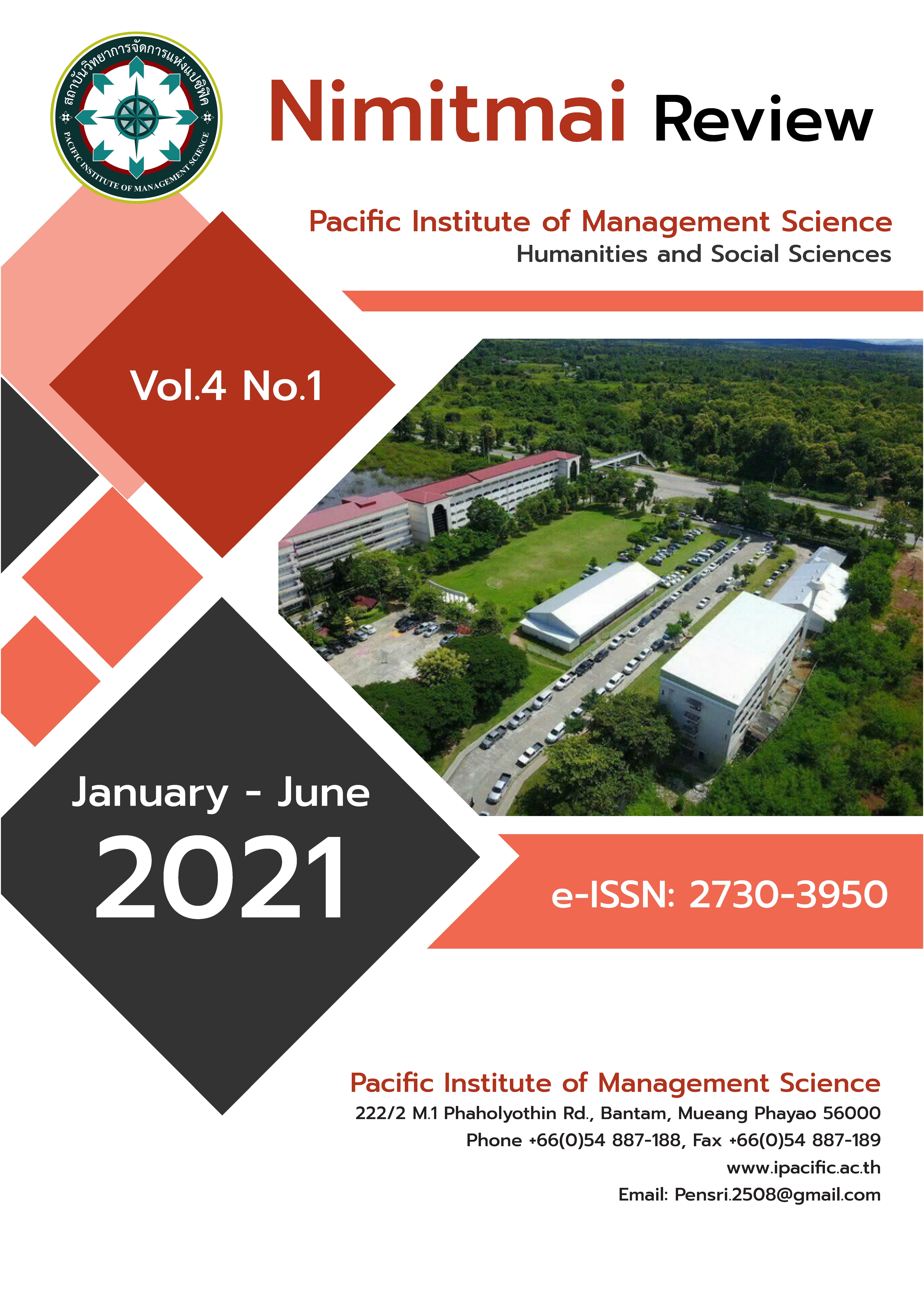The Guidelines to Eliminate Thai Farmers’ Poverty In Chaiyaphum Province
Keywords:
Poverty, The Guidelines for Poverty Elimination, Thai Farmers’ PovertyAbstract
This research article aimed to propose the Guidelines to eliminate Thai farmers’ povertyin Chaiyaphum province The methodology of the research is mixed methodology. A set of questionnaire was used to collect data from 403 famer household samples, 2 focus groups with 30 farmerswere interviewedand in-depth interview with 21 farmers, and a focus group meeting with 9 farmerswerw done to conclude from the Guidelines to eliminate Thai farmers’ povertyin Chaiyaphum province.
The research found that with respect to poverty conditions, The comparative proportion of the poor famer households amounted to 64.34% of the whole famer household samples in Chaiyaphum province. Most poor households had some correlated functions that the average age of the head householder is 52.61 years old, the highest education level at primary is 78.60%, the average number of family members is 4.24, the average subsistence area is 11.67 rai, the average income is 88,179.90 baht per year while the average expense is 54,476.43 baht per year which can calculate the percentage of the expense rate per the income rate at 66.77%, and the average household debt is 85,724.57 baht. The impact factor on household poverty are sex, age, educational level, number of household members, numbers of occupation-members, number of dependent-members, governmental district of household, logistic system, agricultural subsistence areas, kind of agriculture, water suppliance or subsidy, attitude on occupation, modernity lifestyle, technological lifestyle, pro-changing lifestyle, attitude on loan. The proper Guidelines for Thai Farmers’ Poverty Elimination in Chaiyaphum province are as follows : 1. An effective ability and opportunity improvement on occupation development and income making. 2. Strengthening of agricultural economy. 3. Effective public service and social protection for the poor and the disadvantage. 4. Life quality improvement of the poor and the disadvantage in health, mind, and public services access. 5. Governmental system improvement using political participation.
References
Ananchanok Sakontawat. 2013. Poverty Dynamics: A Case Study of Farmers in Central and North-Eastern Thailand. Bangkok: Office of the National Economics and Social Development Board.
Apichai Pantasen. 2006. Synthesis on Sustaianable Development. Bangkok: TDRI.
Farrin, Kathleen Maura. 2013. Escape from Poverty Traps: Three Essays on the Effects of Policy Intervention on Agricultural Productivity and Welfare among the Rural Poor. Dissertation on Doctor of Philosophy (Agricultural, Environmental and Developmental Economics), Ohio State University.
Guizar-Mateos, Isai. 2013. Financial Development, the Dynamics of Technology Choices, and Poverty Traps. Dissertation on Doctor of Philosophy (Agricultural, Environmental and Developmental Economics), Ohio State University.
Helm, Virginia M., William M. Bauer, and Dorothy Erb. 2005.Understanding Poverty and the Developmental Education Student from Appalachia: A Handbook for Educators. Ohaio: Marietta College.
Itsarapoan Thipkam. 2015. A Preparation on Banking Business for supporting a Changing of Older Age Agricultural People. Bangkok: Bank for Agriculture and Agricultural Cooperatives.
Kandula, Uday Bhaskar. 2012. Do The Causes Of Poverty Vary By NEIGHBORHOOD Type?. Dissertation on Doctor Of Philosophy (Urban Studies And Pubilc Affairs), Cleveland State University.
Lee, Youngae. 2008. Poverty Transitions For The Elderly. Dissertation on Doctor of Philosophy (Family Resource Management), the Ohio State University.
Makha Kittasangkha. 2014. Poverty concepts and Theories in Social Policy and Equality.Cited by http://office.nu.ac.th/gentle/theory.htm.On December 10, 2014.
Manas Suwan.2014. Rural and Poverty: Eco-Sociological Perspective.Cited by http://www.cdd.go.th /cddwarehouse/pdf/p_08.pdf.On December 10, 2014.
National Statistical Office. 2015. Poverty and Income Distribution. Cited by http://social.nesdb.go.th/SocialStat/ .On April 15, 2015.
Office of Agricultural Economics.2006.Poverty Condition in Agricultural Household. Bangkok: Ministry of Agriculture and Cooperatives.
Samchai Srisan. 2009. Poverty in Globalizational Capitalism. Dissertation of Doctoral of Philosophy (Interdisciplinary), Thammasat University.
Somchai Chitsuchon, Et al. 2008. Debt and Saving (1st Phrase)(Research in Research Project on Macro-economic Policy Project). Bangkok: TDRI.
Suppajet Chansan. 2009. Poverty and Inequality of Income in Thailand. In Population Science 25 (2). (2009, Sep)., 71-89.
Surachai Churlinfa. 2008. Debt Behavior: Before and After Thailand Economic Crisis. Bangkok: Thammasat University.
Thanyachanok Pawala. 2008. Household Saving in Rural Noth-Eastern Region. Dissertation in Master of Economics, Khonkhaen University.
The Thailand Development Research Institute.2006. Formal Poverty Line Adjustment. Bangkok: TDRI.
Walter Kazandjian, Mihran. 2014. Land Politics, Urban Poverty and Exclusionary Planning in an Inland Chinese City. Cleveland: Kent State University.
Warayut Palasri. 2013. Household Poverty Factors Analysis: A Case Study of Mahasarakham Province.In Rajabhat Mahasarakham University Journal in Humanity and Social Science 7(1). (2013, Jan – Apr)., pp. 29-32.
Wichai Turongkapan. 2012. Poverty and Income Distribution. In Development Economics Unit 1-7.4th edition.Bangkok: Sukhothai Thammathirat University.
Wisit Chaiart. 2015. The non-poverty Structural Equation Model of Phuket Province People. In SWU Journal Business Administration 6 (1).(2015, Jan – Jun).
Wittaya Chianpan. Et al. 2010. Research Project on Thai Agricultural household Debt. Bangkok: Thailand Research Fund (TRF).
Woods, Michael. 2005. Rural Geography: Processes, Responses and Experiences in Rural Restructuring. London: SAGE Publications.



